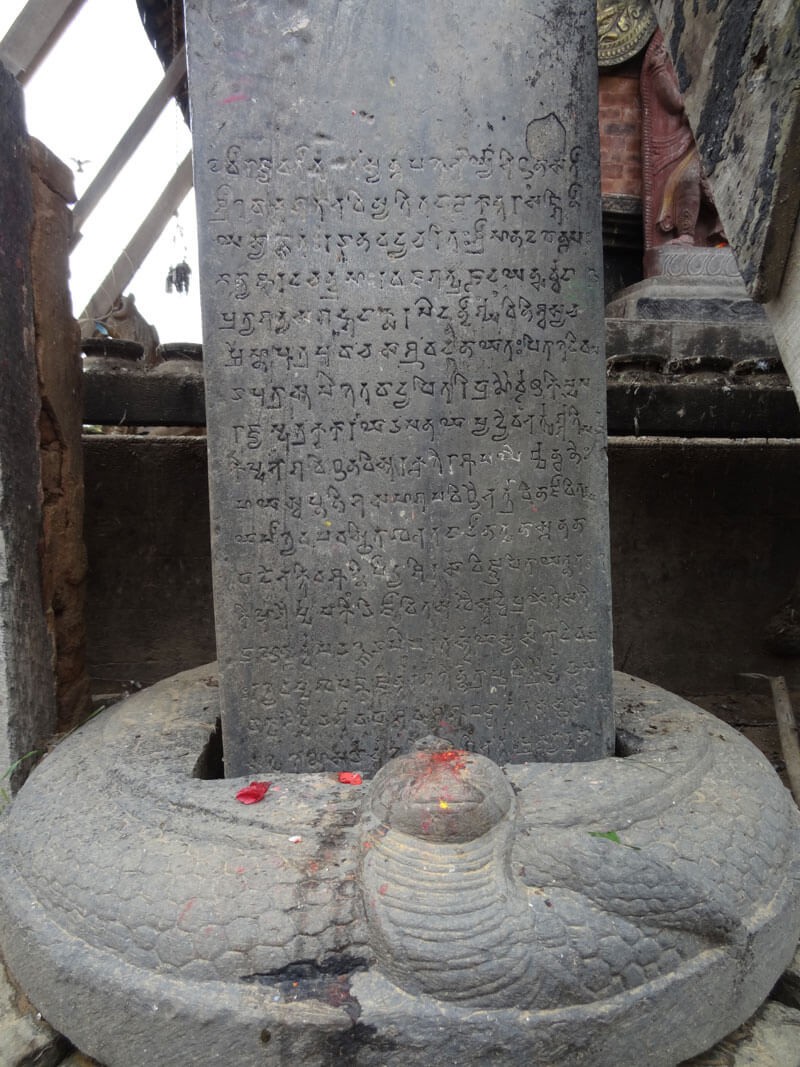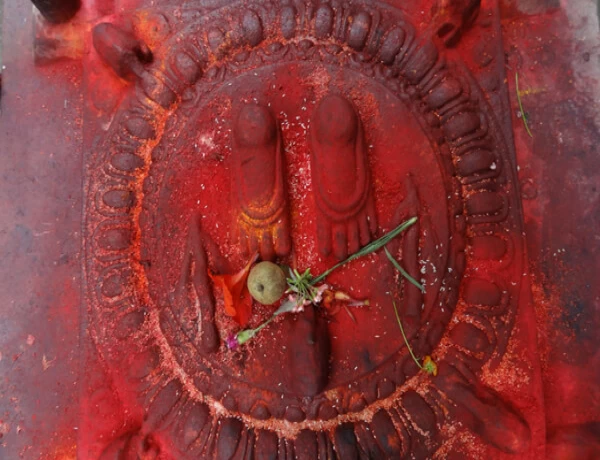Nepal is blessed with natural and cultural heritage, with Kathmandu Valley making the earliest entry in Nepal's World Cultural Heritage list. The Natural World Heritage sites in Nepal feature the world's highest peak, consisting of rugged terrain made up of deep gorges, glaciers, and massive rocks, providing a home to endangered species—the snow leopard and red panda—hosting 208 species of birds.
At the same time, nestled at the Himalayas foot lies another Natural World Heritage representing one of the last undisturbed vestiges in the Terai region, home to one of the last single-horned populations of Asiatic rhinoceros and one of the last refuges of the Bengal tiger.
Likewise, the World Cultural Heritage site in Nepal features archaeological remains associated with the Lord Buddha's birth and monuments featuring old royal palaces and revered sites of worship for both Hindus and Buddhists.
How many World Heritage Sites are in Nepal?
UNESCO has listed four World Heritage Sites in Nepal. The seven groups of monuments and buildings in Kathmandu Valley are counted as one, and Lumbini is listed as a Cultural World Heritage Site. In contrast, the Chitwan National Park and Sagarmatha National Park are listed as National World Heritage Sites. Kathmandu Valley's seven sites include the Durbar Square of Kathmandu, Bhaktapur and Patan, Swayambhunath and Boudhanath Buddhist stupas, and the Hindu temples Pashupatinath and Changu Narayan.
The Chitwan National Park's attractions include jungle safaris, canoe rides, wildlife viewing, and bird watching. The Sagarmatha National Park's attractions include climbing and trekking experiences, insights into Sherpa and Buddhist culture, and a mountain panorama.
Everest Base Camp Trek is perhaps the most popular and iconic trekking destination in Sagarmatha National Park. If a more challenging experience in trekking is required, the Three Passes Trek is the ultimate experience one needs. What's more, a detour of Everest Base Camp can also be added with the Three Passes Trek.
When were Bhaktapur Durbar Square and Swayambhunath enlisted as World Heritage Sites?
In 1979, seven sites in Kathmandu Valley were enlisted in the World Heritage list, including the 16.89 sq. km (6.52 sq. mi) of Bhaktapur Durbar Square. The square hosts traditional art and architecture, historical monuments and craftwork, ancient ponds, pottery and weaving industries, and rich cultural practices. The area is also famous for traditional Newar cuisine, but perhaps the most famous is Juju Dhau, which translates as “king of yogurt" or "king curd." The sweetened custard-like yogurt is the melt-in-your-mouth treat you will be craving long afterward.
The Swayambhunath also comprises seven sites in Kathmandu Valley enlisted in the World Heritage Site in 1979. It is a stupa complex filled with Chaityas, statues, and shrines.
Cultural Heritage of Kathmandu Valley
The Kathmandu Valley was initially formed by draining a lake in prehistoric times; the valley has since been ruled over and inhabited by diverse people. The Gopal and Kirat dynasties followed the valley in the early times, then the Lichhavis, Mallas, and Shahs.
Each has developed the valley, giving us a melting pot of diverse religions, customs, arts, and crafts. Each of the three historic cities of the Valley—Kathmandu, Bhaktapur, and Patan—were once independent states where rulers glorified their rule by showcasing arts and crafts through monuments and temples.
The valley boasts countless temples and stupas standing next to each other for centuries. Three living gods also reside in Kathmandu in the form of Kumari, Ganesh, and Bhairab. They are revered every year during the Indra Jatra festival. The valley is also home to colorful festivals and celebrations. Each city in the valley boasts different Jatras (carnival-like celebrations) at different times of the year.
The 7 World Heritage Sites in Kathmandu Valley
The ensemble of seven monuments makes up the Valley's World Heritage Sites. The Durbar Squares are the monument zones describing the plazas and areas opposite the old royal palaces in Kathmandu, Bhaktapur, and Patan.
Likewise, Swayambhunath includes the oldest Buddhist monument in the valley, and Boudhanath includes Nepal's largest stupa. Similar to Pashupatinath, Changu Narayan has a complex of Hindu temples encircled by traditional Newa settlements.
Kathmandu Durbar Square: Unveiling the Historical Grandeur of Hanuman Dhoka

The Kathmandu Durbar Square held the Malla and Shah Kings' palaces. The special features include the Hanuman Dhoka Palace Complex, where important ceremonies of the monarchy took place, such as the coronation ceremony, Kumari Chowk, the abode of living Goddess Kumari, and the Taleju temple, among others. It is located in the Kathmandu district in the Basantapur area. By taxi, it is accessible from Thamel in about 5 minutes. One can even take a 20-minute walk to Kathmandu Durbar Square from Thamel. The entry fee to Kathmandu Durbar Square is NPR 1000 (~USD 8.6).
Patan Durbar Squares: Discovering the Rich Cultural Heritage of Nepal's Ancient City

The Patan Durbar Square was the Royal Palace of the ancient Lalitpur Kingdom when the Malla dynasty ruled. The special features include the old royal palace and artistically designed temples such as the Krishna Mandir built in the local variety of Shikhara style. It is located in the Lalitpur district and takes around 25 minutes to reach by taxi. The entry fee to Patan Durbar Square is NPR 1000 (~USD 8.6).
Bhaktapur Durbar Squares: Journey through the Timeless Splendor of Nepal's Historic City

Bhaktapur Durbar Square is the ancient palace where the Bhaktapur kingdom's kings resided. The special features include the Palace of Fifty-five Windows and temples such as Vatsala Temple, Naytapola Temple, Bhairab Nath Temple, etc. It is located in the Bhaktapur district and takes about 40 minutes to reach Thamel in a taxi. The entry fee to the Bhaktapur Durbar Square is NPR 1500 (~USD 12.8).
Swayambhunath: Discover the Spiritual Serenity of Nepal's Sacred Stupa

Swayambhunath is one of Nepal's holiest Buddhist stupas, with Hindu deities also filling the stupa complex. The special feature includes the main stupa with a dome at the base and a cubical structure above containing paintings of the eyes of Buddha looking in all four directions. The different parts of the site include the main stupa complex, the Vajra thunderbolt, the Buddha statue on the west side of Swayambhunath, The Sleeping Buddha, the Dewa Dharma Monastery containing a bronze icon of Buddha and traditional Tibetan paintings, and Harati temple—the goddess of all children.
It is said that Swayambhunath was born out of a lotus flower that bloomed in the middle of a lake that was spread across Kathmandu Valley. The site was founded at the beginning of the 5th century. It is located in the Kathmandu district and takes about 10 minutes to reach Thamel in a taxi. The entry fee to Swayambhunath is NPR 200 (~USD 1.7).
Boudhanath: Immerse Yourself in the Sacred Atmosphere of Nepal's Majestic Stupa

Boudhanath is the largest stupa in Kathmandu Valley. The special feature includes the main stupa with a whitewashed dome and gilded tower painted with the Buddha's all-seeing eyes. Around the main stupa, over 50 Tibetan convents have been constructed.
The Nepalese Lichhavi king founded the stupa, which is located on the ancient trade route from Tibet that enters the Kathmandu Valley. It is located in the Kathmandu district, lying on the eastern outskirts, and takes about 25 minutes to reach Thamel in a taxi. The entry fee to Boudhanath is NPR 400 (~USD 3.4).
Pashupatinath: Delve into the Sacred Sanctuary of Nepal's Revered Hindu Temple

Pashupatinath is dedicated to Lord Shiva and is the largest temple complex in Nepal. Temples dedicated to several other Hindu and Buddhist deities surround the site. The main feature of Pashupatinath is the sacred Linga of Lord Shiva (Shiva idol) placed in a pagoda structure.
Pashupatinath is located in the Kathmandu district and takes about 20 minutes to reach Thamel in a taxi. There are 518 temples and monuments in the Pashupatinath complex, which can mainly be divided into the inner courtyard and the outer courtyard.
Regarding the origins of Pashupatinath, there are several complex stories. The main temple which stands today was created in the 5th century. The entry fee to Pashupatinath is NPR 1000 (~USD 8.6). The best time to visit Pashupatinath would be during the evening when Aarati is conducted, providing indulgence in a spiritual journey.
Changunarayan: A Symbol of Rich Heritage and Devotion

It is the oldest Hindu temple still in use in the valley. The special feature includes the pagoda-style temple dedicated to Lord Vishnu. It is located in the Bhaktapur district, lying east of Kathmandu and north of Bhaktapur City. It was initially built in the 4th century during the Lichhavi Dynasty and later rebuilt in 1702 AD after a major fire incident.
The temple can be divided into two parts: the main temple and courtyard, where other shrines dedicated to Ganesh, Shiva, Chinnamasta (Kali), and Krishna can be found. It takes about 50 minutes to reach Thamel in a taxi. The entry fee to Changu Narayan is NPR 300 (~USD 2.6). Here you can see the oldest Stone inscriptions of Nepal.
Conclusion
The Kathmandu Valley has served as Nepal's cultural metropolis, with seven monuments listed in the World Heritage Sites. each of these sites reflects the richness of Nepali arts, culture, tradition, and religion. Even though the valley has been rapidly urbanized, the historical authenticity of the ensembles has remained. No photograph or video will ever be enough to explore Nepal's ancient culture and traditional architecture until one visits it for oneself.






